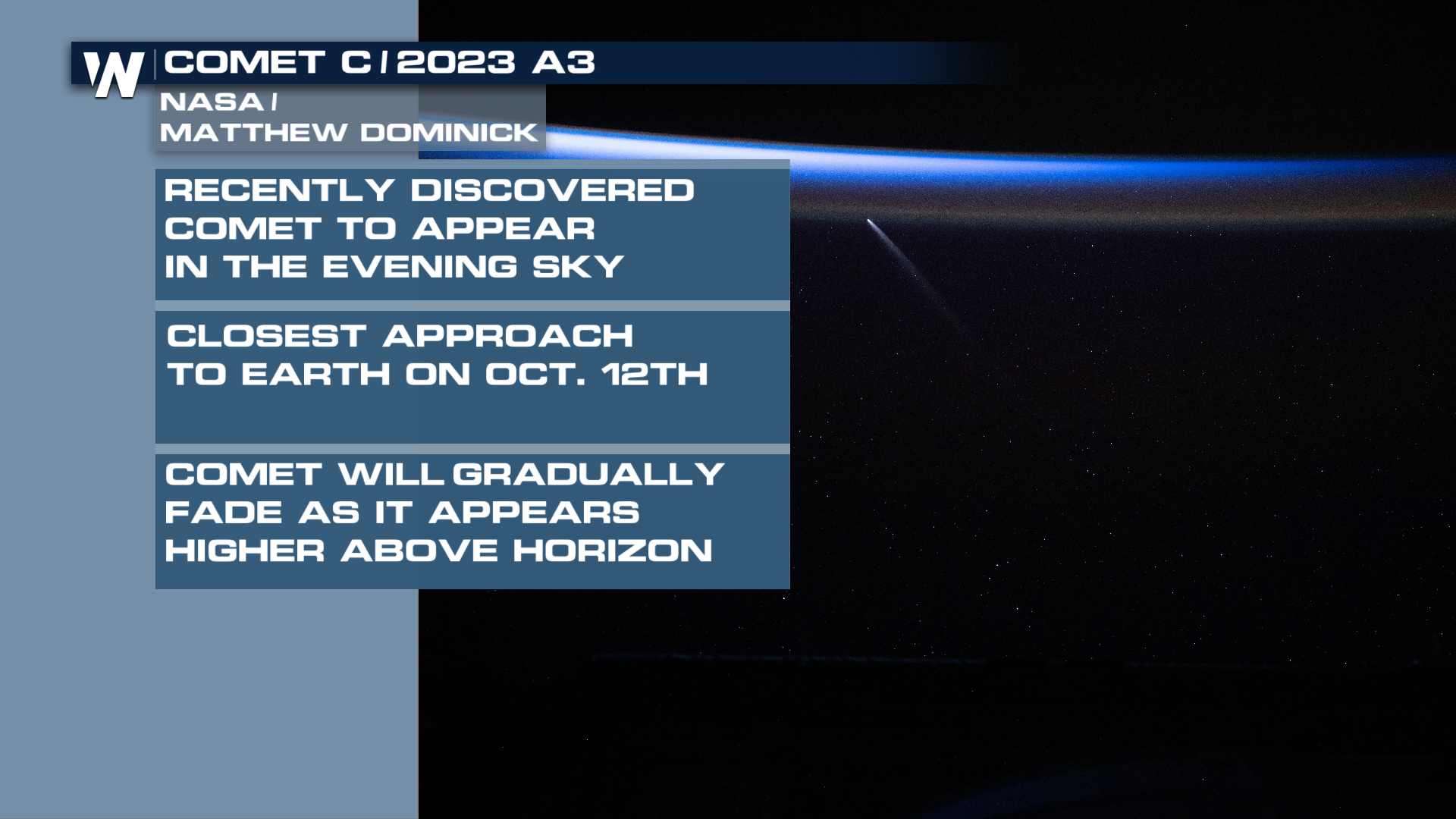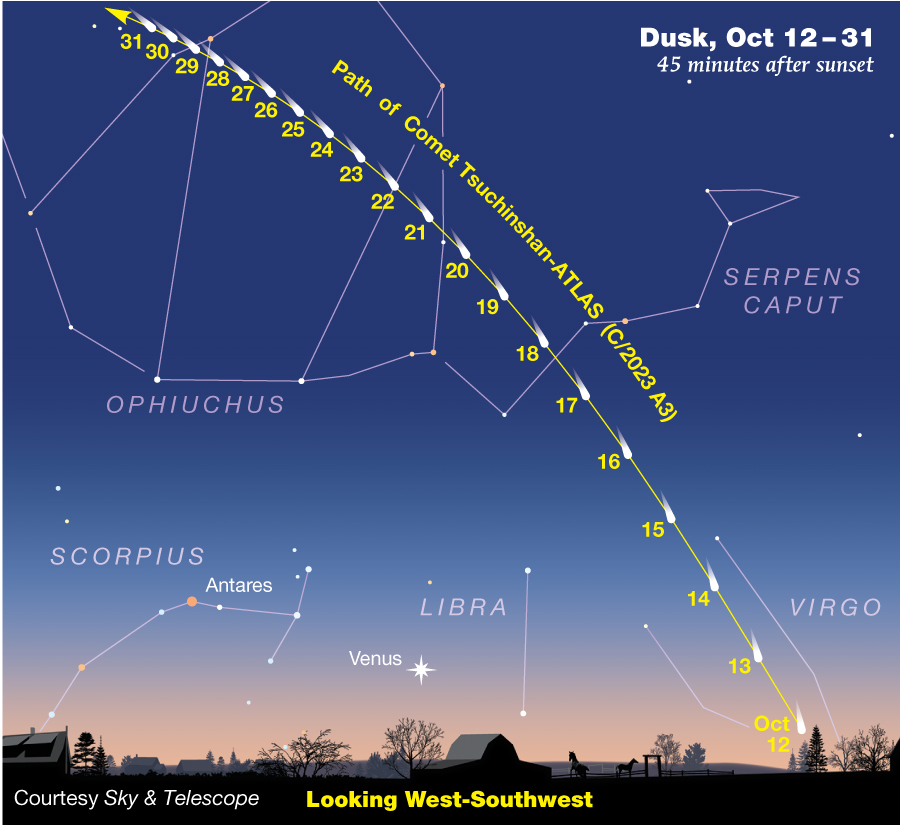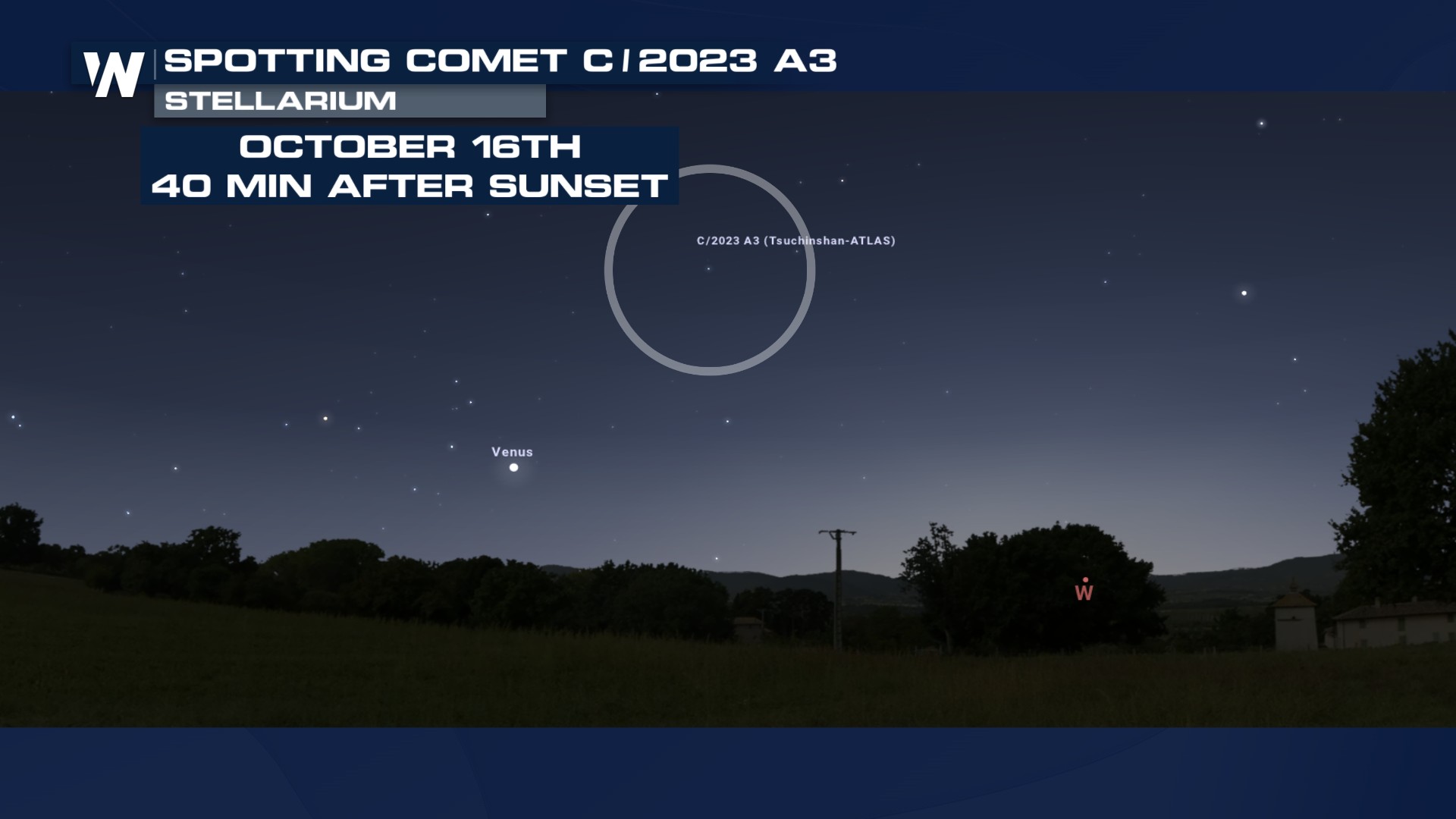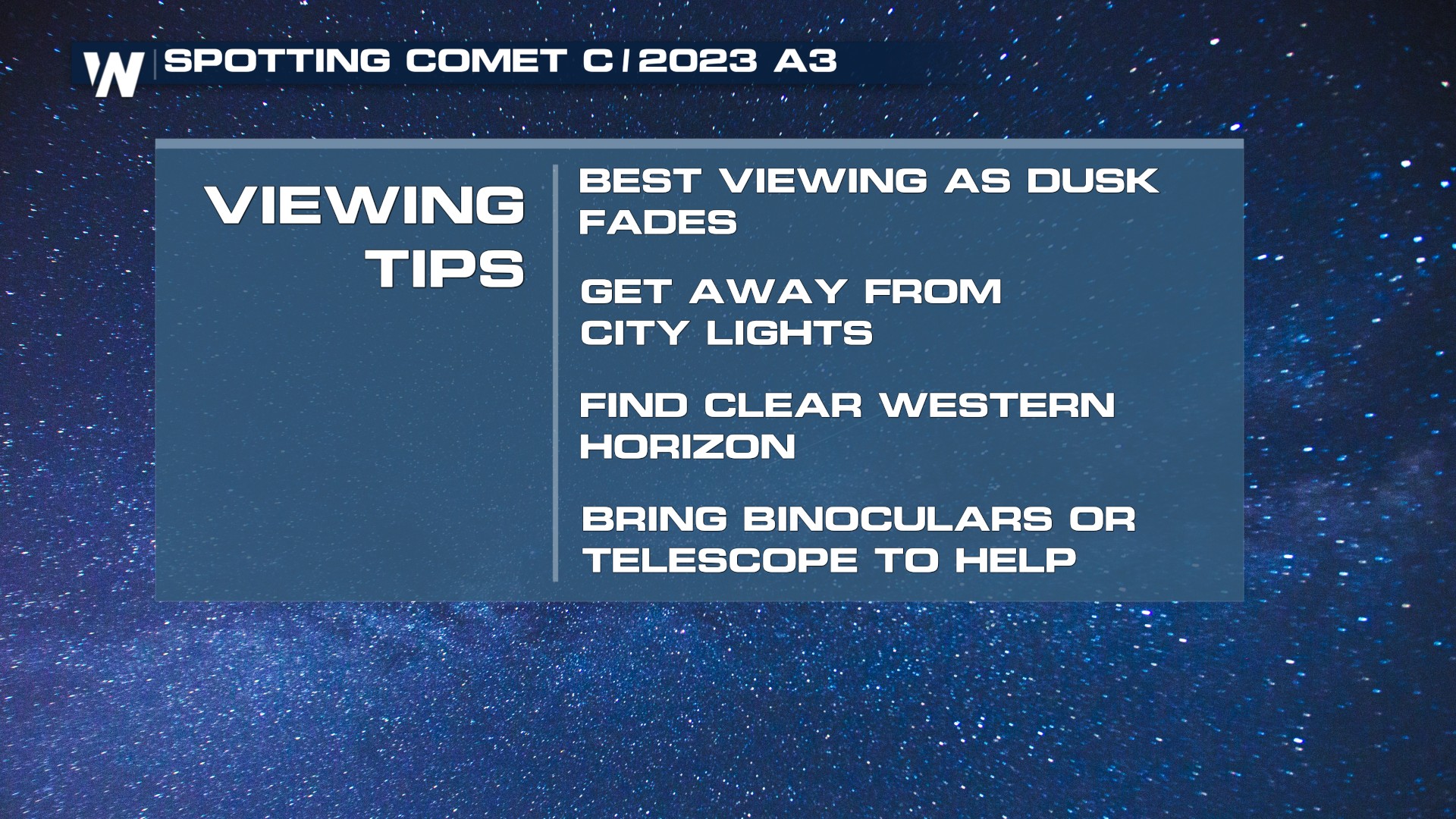Comet Visible for the Northern Hemisphere in the Evenings
It has been an incredible year for space phenomena! The Eclipse captured the country's interest in April before two incredible displays of the Aurora Borealis down to Southern Latitudes in both May and October. Now, stargazers and astronomy lovers could be treated to one of the best comets of the decade through late October.  Comet C / 2023 (A3), also known as Comet Tsuchinshan-ATLAS, last passed the earth about 80,000 years ago, but was only discovered last year! This Oort cloud comet has been gracing the morning skies in the Southern Hemisphere over the last few weeks as it approached and moved around the sun. The comet is now passing Earth at its closest distance in its current orbit and is now expected to move away and slowly fade from view. Because of this movement away from Earth, seeing the comet earlier in the month will likely provide the best viewing conditions!
Comet C / 2023 (A3), also known as Comet Tsuchinshan-ATLAS, last passed the earth about 80,000 years ago, but was only discovered last year! This Oort cloud comet has been gracing the morning skies in the Southern Hemisphere over the last few weeks as it approached and moved around the sun. The comet is now passing Earth at its closest distance in its current orbit and is now expected to move away and slowly fade from view. Because of this movement away from Earth, seeing the comet earlier in the month will likely provide the best viewing conditions!
How to See the Comet

Timing for this event will be important, as the comet will only be visible for a short time in the evening before it dips below the horizon, especially earlier in the month. For the first few nights of viewing, the comet will appear low on the western horizon to the right of Venus (by about two fists held at arm's length). Be sure to be ready around sunset with a clear western horizon and something to be able to zoom in, like binoculars or a telescope. If you're lucky, it may be visible to the naked eye, but the tail may not be visible unless you use magnifying equipment.
Comet Observations
People around the country with clear skies were able to view and photograph the comet on Monday evening
As the month continues, the comet will gradually appear higher above the western horizon, but it is expected to fade as the month progresses. Here is where you'll need to look for the evening of October 16th.

Clear skies will be a must but getting away from city lights will also help the comet stand out as dusk fades into night. Binoculars, a telescope, or a zoom lens on a camera are recommended to help see features of the comet!
 Cloud Cover
Cloud Cover
Clouds could be an issue for portions of the Great Lakes and Northeast. A clear western horizon is ideal for spotting the comet.